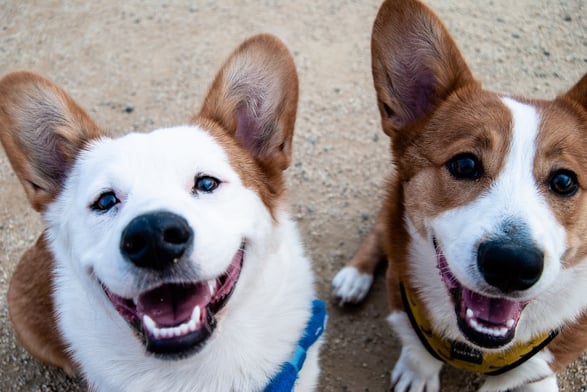Measurement Guidelines For An Airline Pet Crate
Updated on: December 15, 2025 | Author: Starwood Pet Travel

What Type of Pet Travel Crate Do I Need for International Travel?
When it comes to pet travel carriers, there is an abundance of options available for your furry friends to use at home or in the car. However, when it comes time for them to take to the skies, the carrier they travel in becomes a whole new ballgame. It becomes imperative for the kennel to provide utmost safety and security while ensuring maximum comfort for your pets, especially considering the starkly different conditions they will experience compared to being at home or in a vehicle.
Every airline strictly adheres to the pet carrier requirements set forth by the International Air Transport Association (IATA). This means that your beloved pet cannot embark on their flying adventure unless they are safely nestled in an approved kennel. It's crucial to find the perfect size kennel for your furry friend, as you can't simply "eyeball" it. While you might believe that your pet won't mind a little hunch or scrunch, the airlines have strict guidelines. Whether you have a dog or a cat, your furry companion must have the freedom to stand, sit, turn around, and lie down comfortably within the confines of their kennel. Short-nosed (brachycephalic) breeds require additional space to ensure they have ample breathing room.
How Do You Properly Measure Your Pet for a Pet Travel Crate?
To ensure the proper size travel carrier, you need to measure your pet. The four measurements needed are:
- A = Length of animal from nose to the root (bony tip) of the tail (not including the length of the tail)
- B = Height from ground to elbow joint
- C = Width across shoulders
- D = Height of the animal in a natural standing position from the floor to the top of the head or the ear tip (whichever is higher - neither can touch the top of the crate)
Calculate the proper internal dimensions of the kennel
If your pet is not considered a snub-nosed breed then use this formula to calculate the minimum internal dimensions of the travel kennel:
- Length = A + ½B
- Width = C x 2
- Height = D + 3 inches
If your pet is considered a brachycephalic or snub-nosed breed like a Pug, Bulldog, or Himalayan cat, then you can still use the formula above. However, you must then select the next size larger travel kennel for them. This allows more airflow while your pet is inside the travel carrier.
Construction of the kennel
Ensuring the comfort of your beloved pooch or feline is important, but their safety and security are equally crucial. That's why it's essential to choose a carrier that meets the specific construction standards set by IATA. An IATA-approved carrier guarantees that your pet will travel in a kennel that adheres to strict guidelines, providing both comfort and security throughout their journey. These kennels must meet the following requirements:
- Kennels must be made of rigid plastic, solid wood, plywood, fiberglass, or metal. The roof and floor must be solid and leak-proof, and the door must constitute one entire end.
- There must be ventilation on four sides.
- No part of your pet – nose, toes or tail – can protrude from the kennel.
- The openings of the ventilation holes must be no larger than 25 mm x 25 mm (1 in x 1 in) for dogs and 19 mm x 19 mm (¾ in x ¾ in) for cats. Welded wire mesh can be used to cover ventilation holes that are too large.
- Every attachment hole in the top and bottom must be secured with metal bolts and nuts. Clips or twist locks are NOT permitted unless there is the addition of metal nuts & bolts for additional security.
- The interior must be entirely smooth, with no protrusions that could injure your pet or give them something to chew on.
- There must be two dishes/bowls secured to the inside of the kennel that are also accessible from the outside, to provide food and water in the event of a travel delay.
- The door must latch securely, in a way your smarty-pants pet cannot undo.
Some airlines have their own rules in addition to the IATA standards, so it’s a good idea to check with your carrier before purchasing your pet’s kennel. Additionally, some airlines or countries require certain breeds of dogs to be in specially reinforced crates. You will need to confirm this with your airline and/or pet transport company.
Where can you find an IATA-approved travel carrier?
You can find IATA-compliant travel kennels in many pet stores or online. As mentioned above, you need to ensure you have the proper size and construction in order for it to be compliant. Petmate Sky Kennels are highly recommended and used regularly by Starwood (and other companies). Starwood can also provide you with an IATA-compliant travel kennel as part of our services.
If you have an extremely large dog that won't fit in the largest standard plastic kennel, then you may need a custom wooden kennel built for them. Starwood can take care of this on your behalf.
Regardless of which type of kennel your pet requires, it's always a good idea to get it well in advance of their travels. The more time they have to become acclimated to the travel carrier, the more comfortable they will be on the day of their big adventure.
If you're working with Starwood, we always ask you to verify your pet's dimensions and see multiple photos and videos of both your pet and their travel carrier so that we can do our best to ensure you won't run into any last-minute kennel issues at the airport.
Subscribe to the Blog
Enjoy our content? Get them sent to your inbox!
Subscribe Now!

